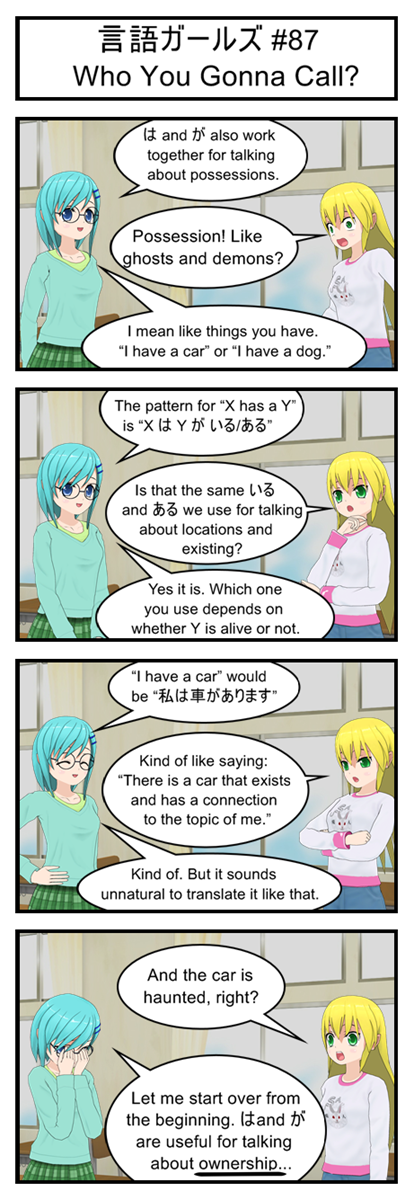
This pattern is also useful for talking about things you “have” but don’t necessarily “own”, like family members and friends. But phrasing it as “possessions” let me use that lame ghost joke and without lame jokes Gengo Girls is no different from any other old textbook.
Transcript
言語ガールズ #87
Who You Gonna Call?
Blue: は and が also work together for talking about possessions.
Yellow: Possession? Like ghosts and demons?
Blue: I mean like things you have. “I have a car” or “I have a dog.”
Blue: The pattern for “X has a Y” is “X は Y が いる/ある”
Yellow: Is that the same いる and ある we use for talking about locations and existing?
Blue: Yes it is. Which one you use depends on whether Y is alive or not.
Blue: “I have a car” would be “私は車があります”
Yellow: It’s kind of like saying: “There is a car that exists and has a connection to the topic of me.”
Blue: Kind of. But it sounds unnatural to translate it like that.
Yellow: And the car is haunted, right?
Blue: Let me start over from the beginning. はand が are useful for talking about ownership…